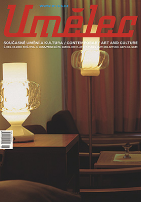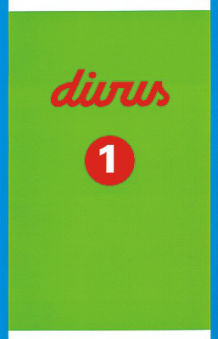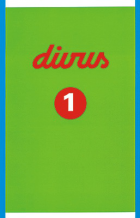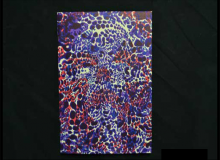"To Lenka Lindaurová
“My biggest advantage is my penis.”
Jake Steed, porn star
I
After the article “L’Origine du Monde” in the previous issue, the topic for the following observations is only logical. A penis always follows a vagina. What at first seemed to be an obvious statement, however, turned out not to be that unambiguous within the given context. Penis imagery in the fine arts is so common that it becomes possible to question whether identical significance exists on the same level of taboo with that of the female gender.1 Just a simple list and description of all the works that represent the penis would take up space several times larger than is reserved for this text. Furthermore, literature dealing with the penis far exceeds texts on the vagina in number.2
II
It almost seems that culture, in its entirety, is fascinated by the penis. Psychology and especially psychoanalysis provided a theoretical framework for this fascination and revealed a number of subconscious motivations.3 Columns from ancient temples, skyscrapers, lighthouses, telecommunication towers, factory chimneys, etc. are interpreted as erect symbols of male domination. The bigger the better. Furthermore, dissatisfaction with one’s own penis, or desire for a bigger one, is often interpreted as subconscious motivation for creative activities. The desire to portray the penis, to preserve it symbolically is also interpreted in psychoanalysis as the fear of castration.
Penis imagery may be divided into two basic categories: the flaccid penis, which even penetrated religious art thanks to Baroque angels, and the erect penis, which was not as “lucky” and is in modern times associated almost exclusively with pornography. The erect penis, however, has been featured in erotic drawings portraying intercourse since ancient times. The distinction between erotic art and pornography goes beyond the framework of this text, and there is essentially no fixed or generally accepted definition of this difference.
III
Penis imagery, however, has not only appeared within erotic contexts in the fine arts, but it is often referred to in other areas as well. In his drawings and graphics, Félicien Rops used sexual symbolism in broader cultural and social contexts, especially in relation to religion. His drawing of Mary Magdalene (1885) depicts a woman lying and masturbating at the foot of the cross on which an erect penis is being crucified in the place of Christ. Rops used the principle of the deification of the phallus on many occasions, and it is not an accident that Sigmund Freud mentioned Rops’ work in his writings. In a number of ways, Robs visually documented the principal, Freudian line of psychoanalysis.
Karel Hlaváček portrayed the penis in a similar context in his series Prostibolo duše (1897) from which the drawing The Deportee was reproduced for the previous issue.4 In his illustration for the poem “Execution of the Soul” he drew the face of a girl being strangled by fingers which were gradually turning into penises. In a letter to Stanislaw Przybyszewski, Hlaváček wrote, “I wanted to express the terrible hatred of all that is real towards that which is psychological. Brutal reality strangles—the sexual reality of the rough, scrubby hands. The hideous fingers metamorphosed into ugly members with nails.”5 The sadistic aggressiveness of Hlaváček’s vision creates an interesting parallel with a fetishistic object made by Filip Turek for his installation Feminiola of Lunacy (1993-1994). Turek created a wire sheath for an erect penis. The sheath, however, does not protect you from the penis. On the contrary, it transforms it into an armored assault weapon, as well as a symbol of uncertainty and fear.
The penis, in stylized form, often appears in the work of Edvard Munch. He used two basic motifs in portraying the penis: the full moon whose reflected image assumes phallic contours,7 and a stylized human shadow. The erotic conjunction of both images becomes obvious in relation to the further context of Munch’s work. In 1894, he painted an oil entitled Puberty in which a naked girl sits on the edge of an unmade bed, hiding her sex with her crossed hands. A terrifying phallic shadow symbolizing the “brutal reality” of adult life approaches from the right. It is worth noting in this context that Munch was one of the first artists using sperm as a motif.8
IV
An image of a “the penis about the itself,” i.e. a penis that reflects the existential loneliness of its owner, forms a separate category. This opens up the imagery of the taboo of masturbation.9 One of the first artists clearly portraying masturbation was Aubrey V. Beardsley who was a member of Oscar Wilde’s circle and who illustrated his play Salome. In 1896, Beardsley made a series of illustrations for Aristophanes’ Lysistrata. Mainly due to Beardsley’s drawings, the work was embroiled in a number of scandals and its distribution and sale were officially prohibited. An erect penis appears on almost all of the pages in the series. The drawing Lampito’s Toilet is of a masturbating cupid powdering a woman’s buttocks. The symbol of pure love is transformed into a symbol of sinful perversity. The drawing The Lakedaimonian Ambassadors also caused uproar. The three men, or rather three erect penises, belong among Beardsley’s strongest works. His work and he himself inspired a number of scholars to reflect on Beardsley’s narcissism, fetishism, homosexuality, transsexuality as well as his incestuous relationship with his sister Mabel.10
The curse of one’s own sexuality was also reflected in the work of Egon Schiele. Sexual themes frequently appear throughout his work, and the expressive mood of his figures caused open protest. From the beginning of his career, Schiele was fascinated by his own face, making dozens of stylized self-portraits. He placed special emphasis on the face, the piercing look of his eyes and dramatic gestures of his hands. The openness with which he displayed his internal world was proportionally precarious. In his Self-portrait (1910), Schiele depicted himself masturbating. Two years later, he was accused of promoting pornography and was sentenced to a short term in prison. During the lawsuit, the judge evidently burned one of the offending works.
On the big screen, masturbation as a symbol of loneliness openly appeared in Chant d’Amour, a Jean Genet film (1953). The picture is partly based on Genet’s personal experience and tells the story of two imprisoned homosexuals, living in neighboring cells. Genet used the tension caused by the inaccessibility and, at the same time, closeness of the two men to capture an extremely emotionally strong story. Masturbation was, in fact, the only possible way to experience physical love.
V
David Wojnarowicz dealt with this topic directly in his series of 24 staged photographs called Arthur Rimbaud in New York (1978-1979).11 The concept took the damned poet through life in New York City at the end of the 1970s. Wojnarowicz’s Rimbaud wanders through the streets like one of the other dozens, hundreds and thousands of losers and castaways, outsiders incapable of becoming a part of society. Rimbaud in a cafeteria, subway, peepshow, on Times Square and in a drug dream with a syringe in his arm. One of the photographs shows Rimbaud masturbating. Sexual themes are quite common in Wojnarowicz’s work, causing censorial intervention. Wojnarowicz’s extirpation was related to his homosexuality but was decidedly encouraged by his contraction of the HIV virus.
AIDS and homosexuality also influenced the photographic work of Robert Mapplethorpe.12 His penis imagery is not only explicit, but also personal. The models for his photographs often included his own friends, and thus his pictures take on a certain intimacy. The penis often became the bearer of a specific identity. The photograph of Mark Stevens (Mr. 10 1/2) (1976) is faceless. Here Mark Stevens is only identifiable through his penis. Arthur C. Danto noted definite hyperbole in this image, which he saw as “placing” the penis not only on a plinth but also in the right hand of the model in the figure of the devil.13 The context of the work’s origin, however, exceeds such hyperbole. At that time, Mapplethorpe was photographing New York’s homosexual S&M scene, taking a number of pictures with this theme at the latter half of the 1970s, including his famous self-portrait (1978).14
This concept of homosexual artists portraying the penis carries a similar meaning in the context of contemporary art to feminist art portraying the vagina: visual expression of minority sentiment through the most obvious symbolism. This includes drawings by the poet Jean Cocteau, or works by the couples Pierre et Gilles and Gilbert and George from the past few decades, as well as a number of others. The enigmatic artist known as Tom of Finland occupies a special position in this respect.
VI.
Jake and Dinos Chapman, representatives of the British art scene, used a penis in their video entitled XXXX, which was exhibited at the Close Echoes exhibition in Prague. This work seemingly flaunted the penis’ uselessness, yet it was not as trite as that might at first seem. The penis, which appeared to be swelling out of a male face, illustrated some of the rumored notions that relate a man’s way of thinking to the quality of his sexual prowess.
Penis imagery in modern art, however, is not exclusively the domain of men as is seen by the number of female artists who have also dealt with the theme. Worthy of note are drawings by Toyen from the period between the world wars or her illustration to de Sade’s Justine (1932). Among other well-known works are phallic objects by sculptor Louise Bourgeois.15 The list of names could naturally be much longer. Literary and art historians, theorists and critics have also dealt with the penis.16 The theme has gradually lost its scandalous air, or, rather, the number of people to whom it is acceptable is increasing. It appears that the penis taboo and directly suppressing the penis concerns a number of prejudices which are now perceived negatively by modern civilization. This is not only about the psychological significance of the imagery of the penis but also its volume, that is, its shape, which does not necessarily have to only symbolize supremacy and domination. The sculpture Princess X by Constantin Brancusi (1916) is one such example.
Translated by Vladan Šír.
Notes:
When asked why the penis is depicted more often than the vagina in the fine arts, sculptor David Černý laconically but logically answered that the penis is volume and shape, i.e. there is something to represent as opposed to the subtle shapes of the vagina.
Works published over recent years referring to current information on the theme include: Joseph Cohen, The Penis Book, 1999, Maggie Paley, The Book of Penis, 1999.
Sigmund Freud naturally mentioned the topic on many occasions, formulating one of the classic themes of psychoanalysis, which is envy, penis envy. The basic literature includes: Some psychical consequences of the anatomical distinction between the sexes. in: Standard Edition of the Complete Psychological Works of Sigmund Freud 19. London 1953-1974, pp. 243-258; W. E. Grossman, W. A. Stewart, Penis Envy. Journal of the American Psychoanalytic Association 1976, pp. 193-212; L. Karma, A clinical report of penis envy. Journal of the American Psychoanalytic Association 1981, pp. 427-446.
More on the series Prostibolo duše in: Arnošt Procházka, Karel Hlaváček, Prostibolo duše. (ed. Luboš Merhaut, Otto M. Urban), Brno 2000.
Karel Hlaváček, Kritiky, Praha 1930, p. 12.
Filip Turek, Feminiola of Lunacy, installation consisting of four parts, mixed media, 1993-1994. Reproduced in: Jinde a v čase. Náchod 1994, pp. 68-74.
For example the often reproduced oil painting Dance of Life, 1899-1900.
August Strindberg portrait from 1896.
Bohuslav Brouk, a member of the surrealist movement, focused on masturbation, including his book Lidská duše a sex. Praha 1992.
Brian Read, Aubrey Beardsley. New York 1967; Malcolm Easton, Aubrey Beardsley and the Dying Lady. London 1972; Brigit Brophy, Black and White, A Portrait of Aubrey Beardsley. London 1968.
The last big Wojnarowicz exhibition took place in the winter of 1999 in the New Museum for Contemporary Art in New York. The exhibition’s catalogue includes a number of reproductions of work from the mentioned series: Amy Scholder (ed.), The Art of David Wojnarowicz. New York 1999.
He also admired Arthur Rimbaud as he made a cover for Rimbaud’s book of poems A Season in Hell.
Arthur C. Danto, Playing with the Edge. Berkeley and Los Angeles 1996, pp. 107-112.
This photograph was reproduced in Umělec iss. 01.2000.
Robert Mapplethorp captured her with one of “her” penises in 1982.
Marcia Ian, Remembering the Phallic Mother. Psychoanalyses, Modernism and the Fetish. Ithaca and London 1993.
"








































 New book by I.M.Jirous in English at our online bookshop.
New book by I.M.Jirous in English at our online bookshop.
Kommentar
Der Artikel ist bisher nicht kommentiert wordenNeuen Kommentar einfügen